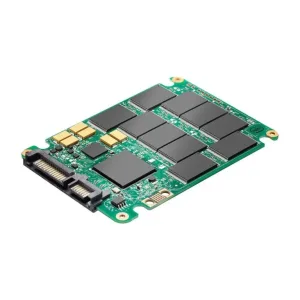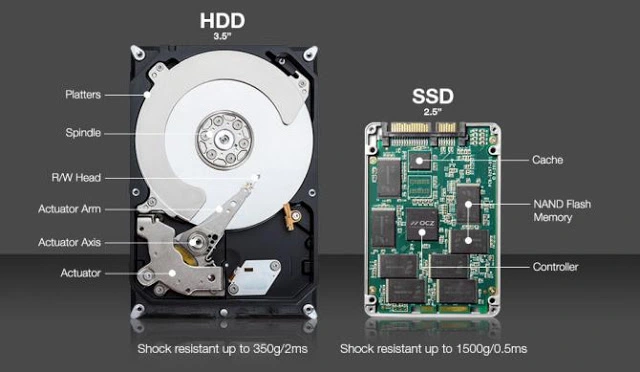 Their obvious advantage is the data access speed, which cannot be compared to any other storage system.
Their obvious advantage is the data access speed, which cannot be compared to any other storage system.
Many people believe that because SSDs do not have moving parts, this makes them more reliable. In reality, things are not like that at all.
Yes, the lack of sensitive moving parts inside the drive makes it less susceptible to certain types of damage (e.g., no issue with mechanical damage due to dropping), but at the same time, these drives are more sensitive to sudden power fluctuations and high electrical and magnetic fields.
The disadvantage of SSD drives is that they have a limited number of write cycles due to their electronic circuits, making the likelihood of data loss greater than that of a conventional drive.
Another disadvantage of these drives is that different manufacturers (Intel, Sandisk, Toshiba, OCZ, etc.) each use their own NAND technology and their own algorithms to achieve the best possible result with their products. This results in each drive being unique, and data recovery can be a true labyrinth.
 Of course, they fail. We receive SSD drives for recovery in our labs daily, and that says a lot.
Of course, they fail. We receive SSD drives for recovery in our labs daily, and that says a lot.
All SSD drives use NAND technology (it is not an acronym; it comes from the logic operations NOT and AND used in programming).
NAND technology has specific properties that determine the lifespan of the storage medium. For example, when data is written to a NAND cell, for data to be rewritten to this cell, the previous data must be erased. This writing and erasing of data is done by sending electrons to the cells (to put it very -very- simply). These electrons pass through an insulator. The position and location of these electrons determine whether current will pass to the cell or not and whether the cell is occupied. As we write and erase data from a cell, as the electrons move back and forth, the insulator wears out to the point that it struggles to hold the electrons in the position they should be, resulting in leakage and/or inability to determine whether the electrons are in the right place.
This, in turn, explains the “limited number of write cycles” that we often mention.
It means that the flash technology itself has a limitation on the number of data reads and writes.
Yes, of course.
As we said, not all SSD drives are suitable for all tasks.
Their main differentiation comes from the type of NAND technology they incorporate.
SLC (Single Level Cell). These have one bit per cell. These drives offer the highest reliability, as even if a few electrons leak, there is not a big problem since we are interested in knowing whether there is current or not. The following examples will make it more understandable.
MLC (Multi-Level Cell). Here we have two bits per cell. This means more accuracy is required, and there is less tolerance for leaks. Since the data is written with ones and zeros, we need to know if the cell contains 00, 01, 10, or 11.
TLC (Triple Level Cell). Similarly, here we have 3 bits per cell, so we need to know if it is 000, 100, 110, etc. Therefore, even slight wear on the insulator and leakage will mean damage to the drive.
QLC (Quad Level Cell). Here we have 4 bits per cell and therefore 16 combinations of 1 and 0, so even the slightest wear will cause a problem.
It becomes clear that SLC SSD drives are the most reliable – and the most expensive.
See here: SSD data recovery cost.
Of course, it should be mentioned that this price list is approximate and the actual cost may vary significantly depending on the damage to your drive. The exact cost is determined only after diagnostic testing.
This diagnostic test is FREE, non-invasive, and takes 1-2 business days.
Send us an SSD drive now. Shipping is free!
The time required depends on the condition of the drive, specifically on the state of the memory chips where the data is stored. Of course, the capacity of the drive and the volume of the data to be recovered also play a significant role.
Generally, a medium-capacity drive with memory in relatively good condition will take 2-5 days to recover.
Your drive uses a controller from Phison, specifically the notorious PS3111, which has shown several issues.
We will recover it.
It is one of the most common questions we are asked.
Maintain backups.
If your drive is anything other than SLC, it is most likely that it will fail before the warranty expires.
The experienced technicians at Northwind Data Recovery have developed a system through which data recovery from such drives is possible with success rates exceeding 96%.
If you have questions about SSD data recovery, you can find answers to what you need in the articles written by our engineers.

